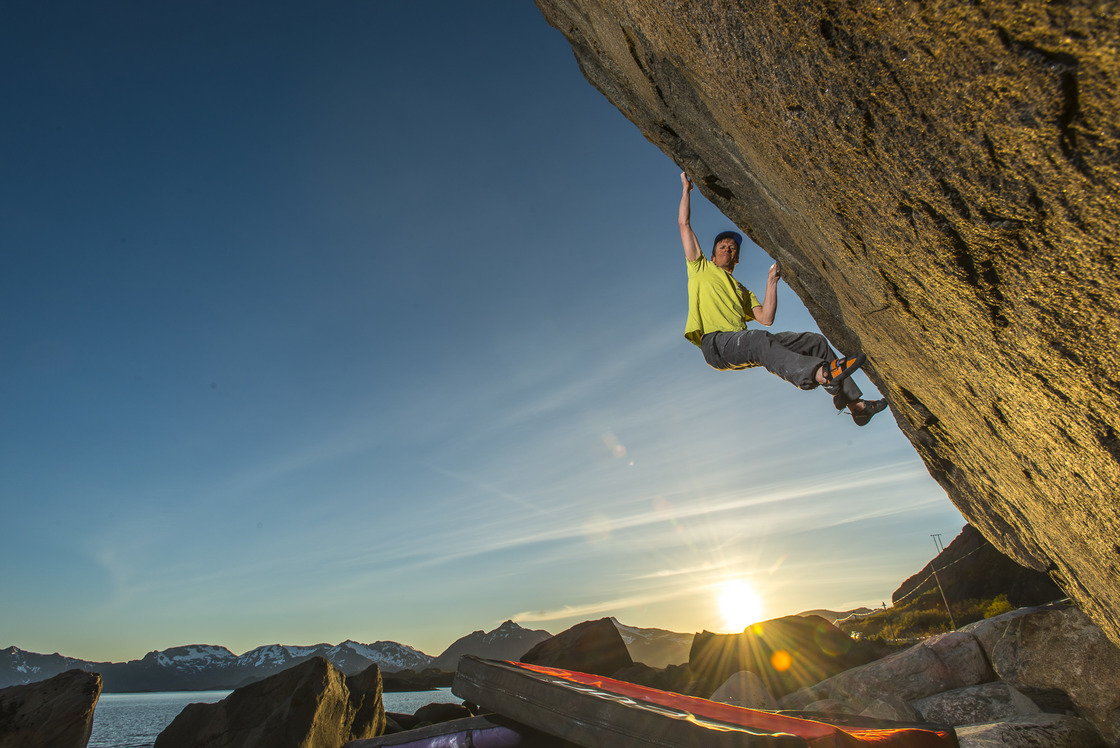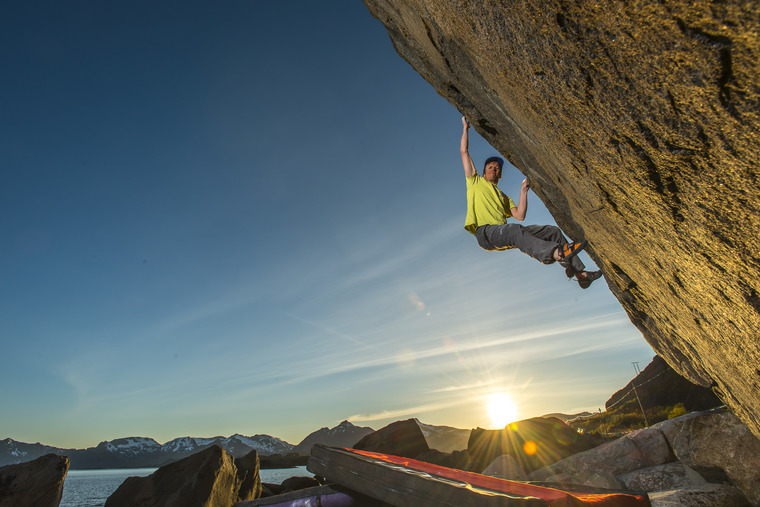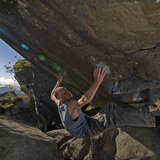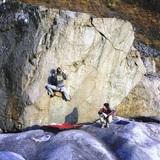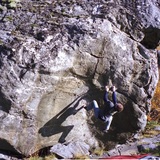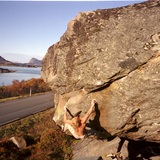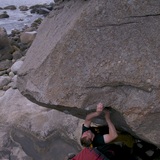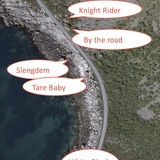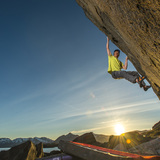This is one of the classic and major bouldering spots of Lofoten. Easy access and with a large number of problems in a wide range of grades makes it a mandatory stop for any Lofoten boulderer. Most of the boulders dry quickly after rain. The only drawback is the traffic, which can be a nuisance during the summer season.
Note: Some of the problems on the boulders on the seaside of the road require low tide to be climbable.
Support the local business by buying the printed Lofoten Bouldering Guidebook at one of the local shops. The book can also be bought at loftenbouldering.com.
Marius Morstad from Oslo, one of the pioneers of modern sport climbing and bouldering in Norway, started leading climbing courses for the Norwegian military in Lofoten in 1991, and has done so every summer since. On a daily basis, after the climbing course exercises, Marius has gone bouldering, often accompanied by his students and fellow instructors. This has led to a tremendous amount of new problems. Many of the nameless problems around Kalle and Henningsvær without specified first ascensionists in this book are the fruits of those summers, and many still remain unrecorded. Marius’ approach to bouldering is very simple, ”To me bouldering is an instant of movement. When I’m done for the day that’s it”, he says. Although recording his feats has
never been high on his agenda a few problems haven’t escaped the public. One such problem lies on the MJK-steinen in the Stem Bastensen area at Lyngvær. This beautiful, sandstone-like boulder was cleaned one evening by a group of marine corps soldiers, by orders from Marius, and yielded several problems, one of which has become a Lofoten classic.
For a number of summers during the ’00s Marius was accompanied by Robert Caspersen, one of Norway’s most accomplished climbers, and together they put up several new lines during after work hours. One of Robert’s best contributions is Tare Baby at Lyngvær, which he established in 2001. At 7C it was the hardest problem up here at the time.
In 2002 the Norwegian climbing magazine Krimp featured an article about bouldering in Lofoten and word started spreading about the potential on these islands. German climber Markus Windisch visited Lofoten that same year and put up Night Rider (7C) and Sunshine (8A+), confirming the potential for hard bouldering in the area.
Shortly after a new breed of locals along with climbers from Bodø and other parts of Norway started putting up more and harder stuff. Mats Peder Mosti, Torstein Eide, Robin Mjelle and Eivind Wang were among the most active climbers at the time, and with a dedicated focus they put up a string of new testpieces. In 2003 Mosti and Eide established Monster (8A) on a lone roadside boulder in Lyngvær and in 2008 Mjelle put up Tangsprell (8A) and Brent stein (8A+), followed by Springflo (8B) in 2011.
